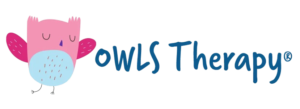Well I haven’t been the greatest about blogging! But that is about to change! I have set a goal for a new blog every other week so here we go!
As I mentioned in my previous blog post, I wanted to talk about red flags that warrant a call to a speech pathologist. I have been a speech pathologist for almost a decade and I have heard many of the same comments from parents. One of the most frequent being, “I didn’t even know that something wasn’t right. Now I feel I have wasted all of this time.” First, I never want parents to feel like they have wasted time or all is lost. The important thing is that they have reached out now! Now, having said that, when should you reach out? Below is a list of milestones that young children should be meeting. If they are not, it is a good idea to call a speech pathologist (OWLS Therapy offers free phone consultations) to see if what you are seeing is a cause for concern and if a more in-depth screening or evaluation is necessary. There are many factors that can impact a child’s language development such as exposure to multiple languages that need to be weighed in to the picture.
What Children Should be Understanding:
Age 2-3
-
Contrasting concepts: (ex. stop-go, in-on, big-little, up-down)
-
Follows two requests (get the book and put it on the table
-
Identifies actions (run, jump)
-
Simple prepositions (in, on, under)
Age 3-4
-
Hears you when you call from another room
-
Answers simple who, what, where, and why questions
-
Identifies main colors (red, blue, yellow, green)
-
More contrasting concepts (rough-smooth, hard-soft)
Age 4-5
-
Pays attention to a short story and answers simple questions about it
-
More contrasting concepts (same-different, long-short, loud-quiet)
What Children Should be Saying:
Age 2-3
-
Has a word for almost everything (200-500 words)
-
Uses 2-3 words to talk about and ask for things
-
Speech is understood by familiar listeners most of the time
-
Often asks for or directs attention to objects by naming them
-
Uses pronouns (I, me, my/mine, you)
Age 3-4
-
Talks about activities at school or at a friends’ homes
-
People outside of family usually understand child’s speech
-
Uses a lot of sentences that have 4 or more words
-
Usually talks easily without repeating syllables or words
-
Uses possessives (his, her) and pronouns (he, she)
Age 4-5
-
Answers/asks “When” questions
-
Uses sentences that give lots of details (ex. I like to read my books on the bean bag chair)
-
Tells stories that stick to the topic
-
Communicates easily with other children and adults
-
Says most sounds correctly except a few (l, s, r, v, ch, sh, th)
-
Uses the same grammar as the rest of the family
While this is just a short list, these are things that I have found provide a good jumping off location to see if a child is on target with meeting developmental norms. Again, if you are ever concerned please do not hesitate to just reach out. If there is something going on, a treatment plan can be designed and if nothing is going on, then you can stop waking up at 3am worried!
Next time, simple strategies to help elicit language!
